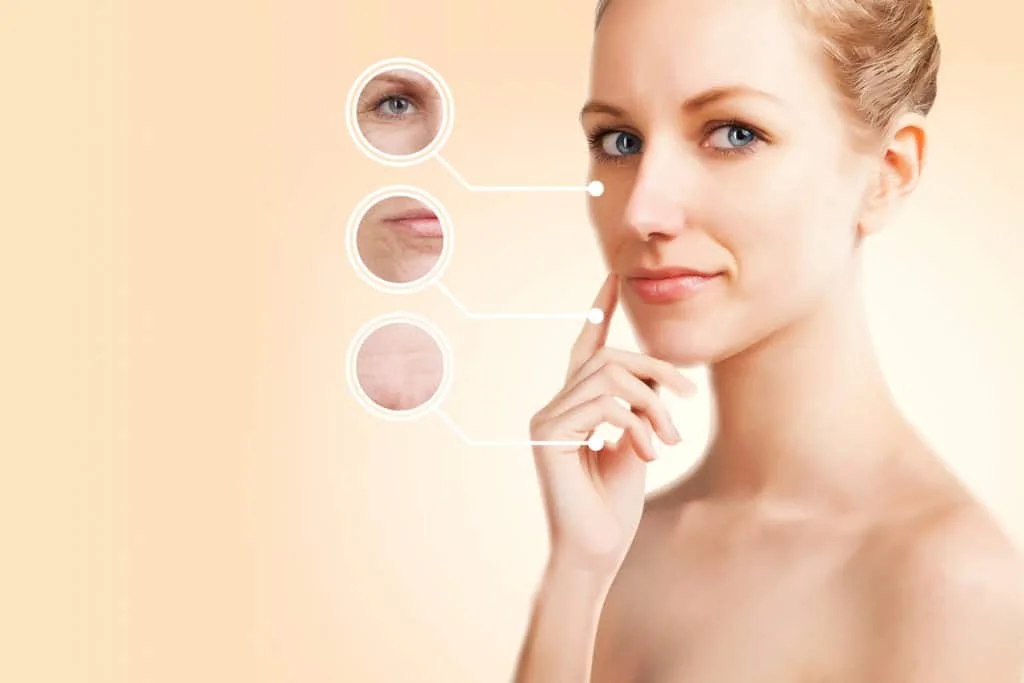
Botox is known as a wrinkle reducer. From a clinical perspective, this drug is classified as a neuromodulator. This indicates how it reduces wrinkles. The brand name Botox is formally onabotulinumtoxinA, one of several botulinum toxin strains produced by the bacterium Clostridium botulinum. The FDA-approved drug has minute amounts of highly purified botulinum toxin protein, free of bacterial substances. Botox injections deposit only purified neurotoxin complex to achieve safe, consistent results.
Before Botox was branded, the botulinum toxin protein had been used for therapeutic purposes. Starting in 1989, the drug was used to treat blepharospasm and strabismus. Though Botox was branded in 1992, the drug was not used cosmetically until 2002, after unintentional wrinkle-reduction was noticed in a large number of patients. At that time, Botox was approved for glabellar lines (frown lines between the brows). Since then, use has expanded to the correction of forehead lines and crow’s feet. Additionally, doctors use Botox for several off-label purposes, including teeth-grinding known as bruxism.

Jaw Clenching is simply holding the teeth together and tightening the jaw muscles. It often is an involuntary action due to stress or anxiety while awake or even asleep and often results in pain or even teeth grinding. Grinding or bruxism involves moving the jaw with the teeth held together. This results in substantial visible wear and flattening of the teeth which is usually obvious both to dentist and patient alike. Our practice offers botox for jaw clenching in Philadelphia, which is always a popular treatment option for our patients.
On each side of the face is a joint called the temporomandibular joint. This structure connects the lower jawbone, the mandible, to the skull. The TMJs move in various ways to facilitate chewing, swallowing, talking, and other activities. These joints do not work independently; they rely on surrounding muscles, tendons, ligaments, and nerves to maintain everyday function. The masseter muscle is one of them. This is a facial muscle that is located at the back of the mouth. If the jaw is overworked or dysfunctional due to structural abnormalities or damage, the temporomandibular joints and masseter muscles on each side of the mouth can suffer. The joints may develop painful symptoms. The masseter muscle, one of the strongest in the body based on per-unit weight, may become larger and firmer than is necessary.
Botox injections into the masseter muscle can lessen the force of the chewing, grinding, and clenching that leads to inflammation and damage to the jaw and teeth. The drug works on the masseter muscle just as it does on the muscles that form frown lines. It decreases the intensity of contractions to the point where actions do not generate the same amount of force. Without that, the symptoms of TMJ often subside.
As a neuromodulator, Botox is a drug that targets muscle tissue. Whether treating TMJ pain or masseter hypertrophy, Botox injections are administered to the masseter muscle at the back of the jaw. It is not injected into the temporomandibular joint itself.
Relief can vary from one person to another. Pain relief typically lasts from 3 to 5 months but may be affected by various factors, such as the persistence of clenching and grinding or gum-chewing.

As Botox wears off, the masseter muscle may expand again or become tight. Additional Botox treatments can be scheduled as this occurs. Once you have an idea of how long your results last, you can schedule touch-up treatments as often as every three months to prevent TMJ symptoms from returning.
Alternative Uses Of Botox For Cosmetic Jawline Slimming
Botox atrophies or weakens the jaw muscle and makes the muscles appear smaller, thus a more feminine or V-line shape is achieved.

The effects of Botox injections for TMJ disorder and a widened jaw are not immediate. In conventional use as a wrinkle-reducer, Botox usually takes 7-14 days to see full results; however, for the jaw area due to the strength of the muscles, full efficacy can take up to one months or 30 days especially for the initial treatment. Doctors who utilize Botox for jaw slimming and TMJ usually expect improvements to continue for four to six weeks when they reach their optimal level. Results may last from 3 to 5 months.
The masseter, one of the primary muscles of chewing, is thick and strong. It is located at the outside of the face and runs down from the cheekbone to the lower jaw. It is the bulk of the soft tissue located in this area of the face. Masseter hypertrophy is the condition of enlargement of the masseter muscle. When the muscle becomes enlarged, it may widen and square-off the bottom of the face. This is the opposite of the youthful, feminine V-shape most women want to portray. Botox is a solution to this problem.
Because Botox injections into the masseter muscle diminish the strength of its contractions, the muscle can gradually decrease in size. The reduction in muscle firmness and enlargement can restore a narrower, more feminine contour to the lower jaw. This works without adversely affecting the ability to chew.
The side effects of Botox treatments are generally mild and short-lived. When injections are performed in the masseter muscle, the area may feel sore or uncomfortable when chewing or talking. This side effect usually lasts no more than 24 hours. Depending on the severity of TMJ or masseter hypertrophy and the amount of Botox needed to correct symptoms, some patients may experience minor changes in their ability to chew. This is usually limited to foods that require more chewing, like steak and limited to a period of a week or two. If chewing changes after Botox jaw slimming or TMJ treatment, it may be helpful to eat a softer food diet until full chewing capacity returns.
Our center is one of the highest volume provider of Botox in the country and our providers have been trained by Dr. Lee who has been performing jaw Botox treatments for over 15 years. We recommend minimum 50 units for TMJ, clenching and grinding. For patients desiring to slim their jawline appearance, a higher dosage of 70-100 units (depending on how strong the jaw muscle is) is necessary. Our pricing is $12-$13 per unit for our providers. There are additional discounts offered for the higher dosage treatment for jaw slimming. We want to encourage optimal dosage for the best results. Typically, you will need to have the treatments every 3-4 months for a year or two and then you can prolong the results for 6+ months. Also, with ongoing treatments, lower dosage can be used for future ongoing treatments.


This procedure has become more popular due to social media posts but Dr. Lee has been performing this treatment for over 15 years. This treatment is very popular in Asia especially Korea, the mecca of plastic surgery in the world. So Dr. Lee is one of the most experienced providers of this treatment in the U.S. and has trained his providers his technique. So choose a provider that is experienced performing this treatment. The risk of injecting too close to the mouth area and not understand the facial anatomy, your smile and also your chewing can be affected.
If you’re interested in learning more about Botox treatment please contact us for a consultation at (610) 789-6701 or fill out our contact us form. We will discuss your needs and concerns, and determine your best course of action.